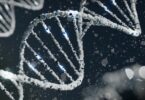Definition of DNA
DNA is an organic molecule that contains genetic information and instructions for protein synthesis. DNA stands for Deoxyribose nucleic acid, and it is found in almost every cell of the living organism. It is a fundamental part of reproduction.
Definition of Recombinant DNA technology
Recombinant DNA technology involves the simultaneous integration of DNA molecules injected into a recipient by two separate organisms to develop necessary genetic assortments for science, pharmaceutical, farming, and industries. Similarly, recombinant DNA (rDNA) is the common name for a piece of DNA create by joining a minimum of two strands of DNA.
These are DNA molecules produced by in vitro techniques of genetic restoration (such as molecular cloning) to join heredity material from different origins and create a new sequence that is not found in the genome. Initially, we have a gene of interest that we want to express and a plasmid vector which will carry our gene. (Plasmid is an extra-chromosomal genetic material in bacteria). Plasmid with our gene of interest knows as Recombinant DNA.
The Recombinant DNA in a living organism was first extracted in 1973 by Herbert Boyer of the University of California, San Francisco, and Stanley Cohen at Stanford University. They utilized E. coli, a restriction enzyme for inserting external DNA into plasmids.
Recombinant DNA technology comprises of following:
- Genetic material’s isolation
- Digestion with restriction enzymes
- Amplification with PCR
- DNA molecule’s ligation
- Recombinant DNA incorporated into the target
- Recombinant cell isolation
Recombinant DNA technology’s initial step is to separate the target DNA into its raw form, that is, to be free from other organic compounds like proteins. Because DNA is present inside the cell membranes, including many biomolecules such as RNA, proteins, lipids, and polysaccharides.
It must be isolated and processed by enzymes such as lysozymes, cellulose, chitinase, ribonucleases, proteases, etc. With some enzymes or therapies, other macromolecules can be degraded. The modification with ethanol contributes to the creation of fine threads of DNA. Then the purified DNA is supplied.
To cut the desire portion of DNA, we use restriction enzymes, also known as molecular scissors. These molecular scissors only cut DNA from particular sites (Restriction enzyme digestion). These restriction enzymes cut the DNA and leave sticky ends to allow DNA nucleotides to pair with vector DNA or Plasmid. Similarly, vector DNA is treated with a restriction enzyme leaving sticky ends for pairing with desire DNA. This treatment is done by incubating pure DNA within the optimum environment with the specified Restriction enzyme for the selected restriction enzyme.
To know the progress of the restriction enzyme, we use Agarose gel electrophoresis. We run the DNA on the Gel. The DNA that is oxidized would travel to the top anode when the charge is applied. This technique will separate DNA based on its size. The cut and fragmented DNA will be separate.
The next step is to amplify fragmented DNA or to make its copies. The amplification is done with Polymerase chain reaction (PCR). PCR uses DNA polymerase, an enzyme to make millions of copies of DNA.
PCR works on thermal cyclers and contains the sections below;
- strand of DNA (That is going to be multiplied)
- Primer (A short fragment of single-stranded DNA that initiates amplification)
- DNA polymerase an enzyme
- Nucleotides (Used to lengthen the primer with the help of the enzyme)
PCR is followed by DNA ligation. Purified DNA and the vector DNA are digested with restriction enzymes. Restriction enzymes will leave sticky ends of both DNAs and let them open for ligation with each other. The process of joining purified DNA and vector DNA is known as ligation. Ligation is carried out with an enzyme known as DNA ligase. A variant of the plasmid Vector and the DNA of interest is the resultant DNA molecule.The combination of these two DNA molecules is known as Recombination and resulted in DNA known as Recombinant DNA. This technique is known as DNA Recombinant Technology.
A host cell, mainly bacteria, is now exposed to the recombinant DNA.This method is known as Transformation. Usually, every particular bacterial cell can only join a single recombinant molecule. Once the recombinant DNA molecule reproduces, many clones are made, like all the other plasmid DNA molecules. All of the daughter’s cells obtain regenerative plasmid, regenerated in each daughter’s cell as the bacterial cell divides.
Cells of bacteria do not recognize foreign DNA easily. That’s why the bacterial cell is treated with thermal shock, Ca++ ion treatment, or electroplating to make them ‘capable’ of carrying new DNA.
After Transformation, there is a mixed population of the genetically modified or transformed and non-transformed host cells. During selection, we only select the transformed or genetically modified host cell. For the selection or isolation of the altered host marker gene of the plasmid vector is used.
For instance, if we use the Plasmid vector PBR322, it accommodates different marker genes (Genes immune to ampicillin and genes resistant to tetracycline). When pst1 RE is used, the plasmid is separated from the ampicillin-resistant gene such that the transformed cell gets liable to ampicillin.
Recombinant DNA operates whenever proteins by recombinant genes are released by the host cell. Unless expression factors were used, the host would not accumulate sufficient quantities of protein. Protein expression is based on the gene collection of gestures, including a promoter, ribosome binding site, and Terminator, which guide transcription and translation of these cell-to-gene signals. There are signs in the expression vector into which the foreign DNA is incorporated. Signals are of a unique form. In the instance of E. Coli, Signals must be E.Coli. The signal of E.coli is impossible to be recognized by the promoters and terminators of man.
Importance of Recombinant DNA Technology
Over the past few years, recombinant DNA has been gaining prominence, and In the 21st century, recombinant DNA will become more genetically important. Diseases are more common, and there is a decline in rural fields. They’re below the certain regions where Recombinant DNA will affect,
- Insulin production
- Somatic gene therapy
- Germline therapy
- Clotting factors production
- Good Cultivation (drought & heat resistance)
- Vaccines with recombinants (i.e., Hepatitis B)
- Sickle cell anemia treatment and remedy
- Cystic fibrosis diagnosis and treatment
- Development of factors for clotting
Conclusion
Recombinant DNA technology is a method of altering genetic material to get desire proteins or protein that has significant importance. Recombinant DNA has gain importance over a while when genetic engineering is involved in our lives, e.g., medicine, agriculture, or industries. Production of insulin is one of its primary vital points that significantly changed our way of living.
See Also









